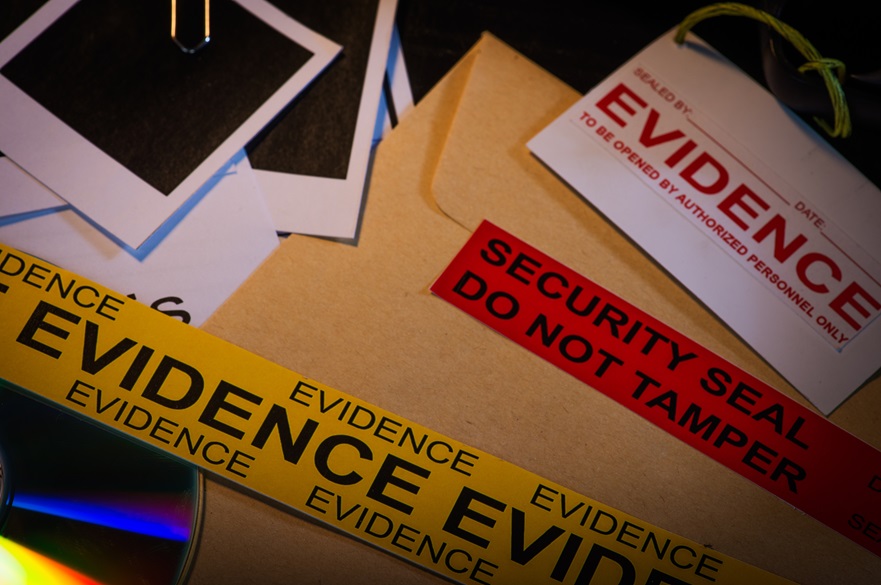Black History Month 2022 - Diversity in Science: Vote for your most inspiring scientist
Vote for your most inspiring scientist this Black History Month.
Below are the seven nominations from our students this year and some popular ones suggested previously.
You can vote for any of them up until the end of October 29 at this link with the winning scientist announced on November 1.
Alexa Candy
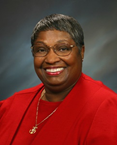 In 1981 Alexa Canady became the first African American women to become a neurosurgeon in the U.S. While often facing obstacles in her career, at age 36, she became the Chief of Neurosurgery at Children’s Hospital of Michigan. Having retired in 2001 to Florida, she then returned to work in a part-time role having discovered that there were no paediatric neurosurgeons practicing in the area.
In 1981 Alexa Canady became the first African American women to become a neurosurgeon in the U.S. While often facing obstacles in her career, at age 36, she became the Chief of Neurosurgery at Children’s Hospital of Michigan. Having retired in 2001 to Florida, she then returned to work in a part-time role having discovered that there were no paediatric neurosurgeons practicing in the area.
After her second retirement she continues to advocate for greater gender equality in her disciplines, and is well known for her statement that "The greatest challenge I faced in becoming a neurosurgeon was believing it was possible”
View further information and watch the video to learn more.
Alice Ball
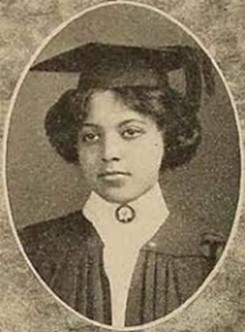 Alice Ball’s discoveries into a chemical cure for leprosy were not known of widely for many years after her untimely death in 1916 at the age of 24 due to actions of others taking credit.
Alice Ball’s discoveries into a chemical cure for leprosy were not known of widely for many years after her untimely death in 1916 at the age of 24 due to actions of others taking credit.
After graduating with two degrees and a published paper from Washington University she accepted one of many scholarship offers to study for a Master’s degree in chemistry at University of Hawaii looking at the chemical properties of the extracts of the Kava plant
This work led to her being employed to investigate in adapting an oil to be better delivered to patients suffering from leprosy who were sent to the nearby island of Molokai with little hope of survival. The process she investigated, known as the Ball Method allowed the oils to be the only real treatment for the disease until the discovery of other drugs some 30 years later.
The 21st century has led to much greater recognition within Hawaii and more widely highlighting the remarkable achievements of such a short life.
View further information and watch the video to learn more.
Zahar Hadid
 Zahar Hadid was a Mathematics graduate, who became a world-famous architect. Projects include the 'London Aquatics Centre' for the 2012 Olympics and the Dongdaemun design plaza in Seoul.
Zahar Hadid was a Mathematics graduate, who became a world-famous architect. Projects include the 'London Aquatics Centre' for the 2012 Olympics and the Dongdaemun design plaza in Seoul.
View further information and watch the video to learn more.
Neil deGrasse Tyson
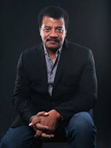 While Neil deGrasse Tyson is best know as a science communicator, and is one of the more famous scientists worldwide, he is also a physics graduate and was the youngest person ever to be named director of the Hayden Planetarium, a position he gained 2 years after arriving at the institution and one he still holds today.
While Neil deGrasse Tyson is best know as a science communicator, and is one of the more famous scientists worldwide, he is also a physics graduate and was the youngest person ever to be named director of the Hayden Planetarium, a position he gained 2 years after arriving at the institution and one he still holds today.
While still a teenager he gained some fame in giving lectures in astronomy, his studies leading to undergraduate studies at Harvard and post graduate studies leading eventually to a PhD from Columbia University after a time at Texas University where he admits he did not spend enough time in the lab. His research has focussed in the area of astrophysics, with him being the author of many best selling books on the topic in addition to appearance in many other types of media.
View more information or watch the video to learn more.
Lonnie Johnson
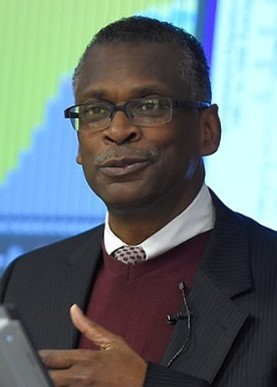 While he is perhaps best known for designing the “SuperSoaker” water pistol he has also worked on both the Saturn Rocket project and the Mars Observer program while in NASA and the stealth bomber program in the US air force
While he is perhaps best known for designing the “SuperSoaker” water pistol he has also worked on both the Saturn Rocket project and the Mars Observer program while in NASA and the stealth bomber program in the US air force
In 1968 he represented his school at a science fair in Alabama as the only black student in attendance. He won first prize for his compressed air powered robot.
Most recently his company is working on the Johnson thermoelectric energy converter, a system for converting heat energy into electricity.
View further information or watch the video to learn more.
Min Chueh Chang
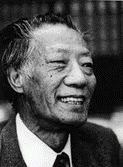 Min Chueh Chang was a Chinese American biologist who after being awarded an undergraduate degree in Beijing, then won a national fellowship to study abroad leading to a short time at Edinburgh University before moving to study fertilization in mammalian reproduction at University of Cambridge where he received his PhD.
Min Chueh Chang was a Chinese American biologist who after being awarded an undergraduate degree in Beijing, then won a national fellowship to study abroad leading to a short time at Edinburgh University before moving to study fertilization in mammalian reproduction at University of Cambridge where he received his PhD.
After moving to the Worcester Foundation of Experimental Biology in Shrewsbury, Massachusetts he is famous for co-developing the oral contraceptive pill. However, much of his work from then was on the promotion of fertilization with his work on transferring eggs and sperm between rabbits of different lineages leading to in vitro fertilisation in humans (IVF) and the first “test tube baby” in 1978.
View further information or read more.
Sundar Pichai
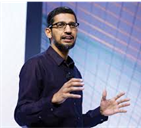 Sundar Pichai is an engineer with a degree in Metallurgy, and an MSc in Material Sciences and Engineering, and is now CEO of Google LLC. He is responsible for leading work on Google Chrome and many other applications. He has also been vocal in his opposition to anti-diversity views that were expressed by an employee in 2017.
Sundar Pichai is an engineer with a degree in Metallurgy, and an MSc in Material Sciences and Engineering, and is now CEO of Google LLC. He is responsible for leading work on Google Chrome and many other applications. He has also been vocal in his opposition to anti-diversity views that were expressed by an employee in 2017.
View further information or watch the video to learn more.
Further nominations from previous years
Charles Lee Isbell Jr.
Professor Isbell is the Dean of the College of Computing in the Georgia Institute of Technology. As the author of over 100 papers, he is active in the area of artificial intelligence.
He created what is thought to be one the earliest black history databases.
He has received numerous honours for research in the field of interactive machine learning, computing education, and for increasing access and diversity in computing.
View further information or watch the video to learn more.
Krishna Ella
He was born into an agriculturist family in the Tiruvallur district of Tamil Nadu, studying at the Tamil Nadu Agricultural University. He gained a Master’s degree from Universities in Bangalore and Hawaii remaining in the USA to be awarded his PhD from University of Wisconsin-Madison.
After spending some time working for Bayer, he set up his own company with the aim of producing effective vaccines at low cost. These have included vaccines against Typhoid fever, Swine Flu, Hepatitis, Zika virus and most recently an inactivated virus COVID vaccine.
View further information or watch the video to learn more.
Sanduk Ruit
Dr Sanduk Ruit was Born in a remote Himalayan village and lost his siblings to infectious disease including his sister to tuberculosis when he was 17. This drove him to train to be a doctor with the support of his parents and led to his belief that everyone, regardless of income, deserved quality healthcare. He focussed his energies on the treatment of cataracts — a condition treatable in developed countries but responsible for half of all global blindness cases due to expensive and lack of resources elsewhere in the world.
He has pioneered the development of affordable eye surgery and had co-founded an institute that provides such services to patients in several countries regardless of their ability to pay.
View further information or watch the video to learn more.
George Washington Carver
George Carver was born into slavery and spent much of his early years working on a farm learning about herbs and soils. After leaving to attend school he spent several years travelling, gaining an education until attending Iowa State Agricultural School where he became the first African American to earn a Bachelor of Science degree, in this case in botany. Impressed by his work he was encouraged to complete Master’s level studies and then was encouraged to join the Tuskegee institute, now Tuskegee university.
Through his work on soil chemistry, he learned that years of growing cotton had depleted the nutrients from soil. But by growing nitrogen-fixing plants like peanuts, soybeans and sweet potatoes, the soil could be restored, allowing yields to improve when the land was reverted to cotton use a few years later.
The success of the process then led to huge volumes of peanuts, sweet potatoes and soybeans being produced, which George then found numerous uses for leading to him being known by some as “The Peanut man”
Later in his life he travelled promoting both racial harmony in the USA, but also to India to discuss nutrition in developing nations with Mahatma Gandhi.
View further information or watch the video, or this video, to learn more.
Marie M Daly
Marie M Daly was the first African American woman to receive a PhD in Chemistry in the United States and becoming a Professor at Albert Einstein College of Medicine. She pioneered research in areas such as linking high cholesterol to clogged arteries and the damaging effect of cigarette smoke on lungs. Her work noting that cells nuclei had high levels of the DNA bases was cited by James Watson as being important in the discovery of DNA. In teaching she was passionate about increasing recruitment of minority students, leading to her creating a Scholarship supporting this aim.
View further information or watch the video to learn more.
Katherine Johnson
Katherine Johnson was one of the mathematicians depicted in the 2006 book and film “Hidden figures”. For 3 decades she calculated launch windows, trajectories and other flight calculations that put the first American into space, put the first human on the moon and helped develop the space shuttle program.
Her work was held in such regard that astronaut John Glenn would not fly until the computer-based data had been checked by her and her work was instrumental in getting the astronauts of the aborted Apollo 13 mission to be able to navigate a safe return.
She also changed the practice of women not being permitted to have their names on reports they had contributed to, and broke other barriers associated with gender and ethnicity.
View further information or watch the video to learn more.
Mae Carol Jemison
While most famous as the first African American woman in space, Mae Jemison gained a BSc in Chemical engineering, a BA in African and African American studies, and then went on to gain a medical degree as a physician during which she worked in a refugee camp.
While working as a GP she successfully competed against 2000 other candidates to join NASA, during her space mission as Science Mission Specialist in 1992 she logged over 190hrs of space flight including 127 orbits of the earth during which time she performed a number of key experiments.
Her post NASA career has involved her working tirelessly in promoting science, encouraging minority students’ interest in science, in addition to holding a number of Professorships at leading US universities
View further information or watch the video to learn more.
Ada Yonath
Ada Yonath is a crystallographer who developed techniques in, cryo bio-crystallography, which are now standard in investigating biological targets.
While being brought up under very poor conditions, working as a Maths tutor to support her studies, in 1970 she created the first and for a decade, the only, protein crystallography lab in Israel and she is now one of only 4 women to win the Nobel prize in Chemistry
She won the award in 2009 for her work on the structure and function of the ribosome, which helped make clear the action of over 20 antibiotics on this target, leading to breakthroughs in understanding in antibiotic resistance. She was the first Israeli women to ever win this award and at the time, the first women to win in 45 years. She continues to lead research in this area,
View further information or watch the video to learn more.
Nira Chamberlin
He has used mathematical modelling to investigate a range of real-world problems from modelling running costs of aircraft carriers to calculating risks associated with gas pipelines. He gained his PhD in part to provide his son with a role model in mathematics and was named in 2014 as one of the UK’s top 100 scientists.
When discussing earlier setbacks to his career, he remembered his parents’ words of encouragement “You don't need anybody's permission to be a great mathematician!” He works in outreach a great deal including his popular lecture “The black heroes of mathematics”
View further information or watch the video to learn more.
Maggie Aderin-Pocock
Maggie Aderin-Pocock is a space scientist best known for her roles in communicating science (including presenting “The Sky at Night”) and her work on satellites monitoring climate change.
When diagnosed with dyslexia as a child she was told that she should not consider a career in science, but she ended up with 4 A levels and went on to gain a BSc in Physics and a PhD in mechanical engineering.
She continues to inspire new scientists and its estimated she has spoken to over 25,000 children smashing outdated views of science careers, class, ethnicity, and gender.
View further information or watch the video to learn more.
A.P.J. Abdul Kalam
While most famous for his role in developing satellite delivery systems and other missile projects for India and his later Presidency of the country, Abdul Kalam made significant contributions to medical science.
This included continued advocacy of the role of biotechnology in medical science research, developing materials allowing the production of light weight callipers for children with Polio, in addition to being co-creator of a low-cost cardiac stent. With the same collaborator he also helped develop tablet computers for supporting rural health care.
View further information or read more here.
Diane Ashiru-Oredope
Leads the national antimicrobial stewardship initiative for secondary care (Start Smart then Focus) and she developed and leads the Antibiotic Guardian campaign which raises awareness about the problem of AMR and the importance of antibiotic stewardship. In 2015 she was awarded Public Health Pharmacist of the year and in 2016 Outstanding Woman in the Public Sector at the 10th PRECIOUS awards.
View further information or watch the video to learn more.
Jason Gill
Professor in Cardiometabolic Health. His multi-disciplinary team investigates why certain population groups appear to be particularly susceptible to the adverse effects of a ‘Westernised’ lifestyle and how lifestyle interventions can modulate this excess risk particularly concerning lipid metabolism and insulin sensitivity.
View further information or watch the video to learn more.
Alvin Holder
Alvin Holder is an Associate Professor of Chemistry at Old Dominion University and his research involves bioinorganic chemistry. Since the start of his career, he has supported and supervised more than 100 undergraduate, graduate, and post-doctoral trainees both in Barbados and the U.S.A., many of whom are from underrepresented groups.
View further information to learn more.
Ben Carrington
Ben Carrington is a leading scholar on the sociology of race and culture, who works with a particular emphasis on popular culture and sport.
View further information or read more here.
Mazlan Othman
Datuk Mazlan Binti Othman is a Malaysian astrophysicist whose work has pioneered Malaysia’s participation in space exploration. She was her country’s first astrophysicist who helped to create a curriculum in astrophysics at the national university, as well as building public awareness and understanding of astronomy and space issues.
View further information or read more here.
Srinivasa Ramanujan
Srinivasa Ramanujan was a largely self-taught pure mathematician. Hindered by poverty and ill-health, his highly original work has considerably enriched number theory. More recently his discoveries have been applied to physics, where his theta function lies at the heart of string theory.
View further information or watch the video to learn more.
Tejinder Virdee
Tejinder Virdee is a physicist who in 1990, was one of the founding fathers of the CMS experiment at the CERN Large Hadron Collider (LHC), which in 2012 shared the credit for discovering the elusive Higgs boson. Higgs Boson is an elementary particle in the Standard Model of particle physics produced by the quantum excitation of the Higgs field, one of the fields in particle physics theory.
View further information or watch the video to learn more.
Mark Dean
Mark Dean joined IBM in 1980 as an engineer while he worked to receive his master’s degree in Electrical Engineering. He holds three of the company’s nine original patents and worked on the team that developed the original home computer. He also worked to develop the Industry Standard Architecture (ISA) systems bus which allowed other devices to connect to a PC.
Dean then went on to get his PhD in Electrical Engineering from Stanford. He’s also responsible for developing the colour PC monitor and first gigahertz chip.
View further information or read more here.
Kimberley Bryant
Kimberly Bryant is an African American electrical engineer who worked in the biotechnology field at Genentech, Novartis Vaccines, Diagnostics, and Merck. In 2011, Bryant founded Black Girls Code, a training course that teaches basic programming concepts to black girls who are underrepresented in technology careers.
View further information or watch the video to learn more.
Voting is open until the end of October 29 at this link and the winning scientist will be announced on November 1.
Head to our Black History Month 2022 page to learn more about all of our activities planned to celebrate.
- Subject area: Sciences including sport sciences
- Category: NTU Arts; Staff; School of Science and Technology
